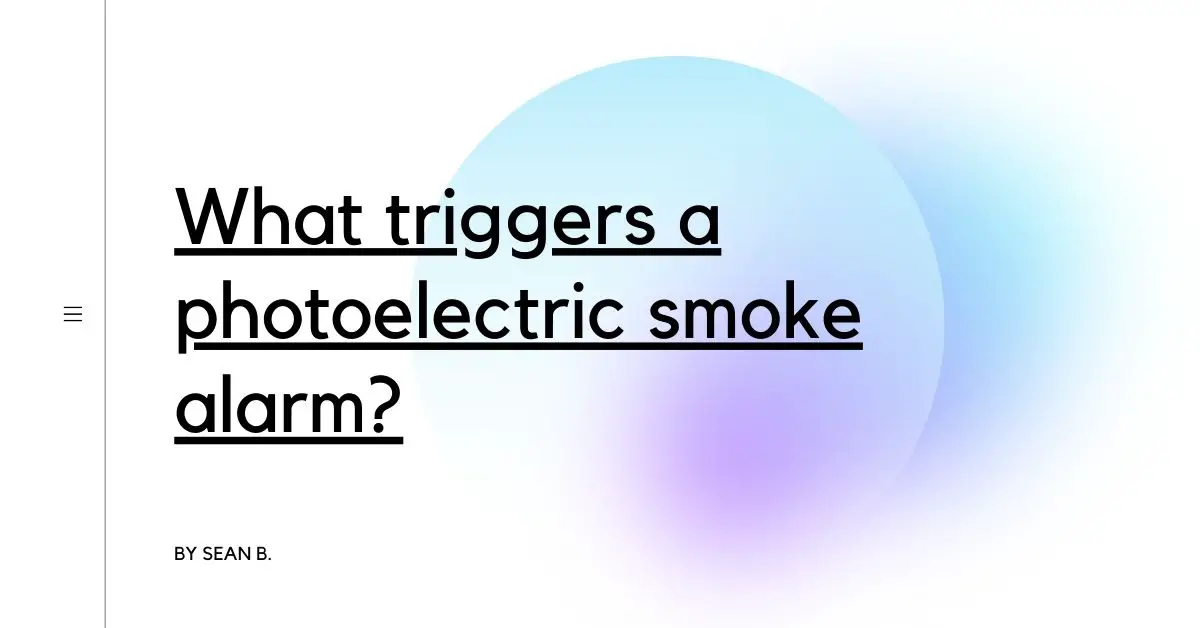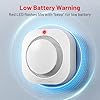When it comes to home safety, a photoelectric smoke alarm is an important device to have. But what exactly triggers a photoelectric smoke alarm?
In this blog post, we’ll take a look at what causes a photoelectric smoke alarm to go off, and what you can do to make sure it’s working properly.
Contents
How to test your photoelectric smoke alarm?
When testing your photoelectric smoke alarm, it is important to know what will trigger the alarm. The most common trigger is smoke, but other triggers can include dust, heat, or even a flame. To test your alarm, simply hold a piece of paper or a match near the sensor. If the alarm sounds, then it is working properly.
How often should you replace the batteries in your photoelectric smoke alarm?
When it comes to keeping your home safe, one of the most important things you can do is to regularly test and replace the batteries in your photoelectric smoke alarm. A photoelectric smoke alarm is a type of smoke alarm that uses a light sensor to detect smoke.
When smoke enters the alarm, the light sensor is triggered and the alarm sounds. Photoelectric smoke alarms are very effective at detecting smoldering fires, which is why it’s important to test them regularly and replace the batteries as needed.
Most photoelectric smoke alarms will have a test button that you can use to test the alarm. It’s a good idea to test your alarm at least once a month. If the alarm sounds, then the batteries are working and the alarm is functioning properly.
If the alarm does not sound, then it’s time to replace the batteries. You should also replace the batteries in your photoelectric smoke alarm if it’s been more than 10 years since the last time the batteries were replaced.
What are the benefits of a photoelectric smoke alarm?
When it comes to home fire safety, having a working smoke alarm is key. But what exactly triggers a smoke alarm? In this blog post, we’ll discuss the benefits of photoelectric smoke alarms and how they work to keep your family safe.
Photoelectric smoke alarms are designed to detect slow, smoldering fires that may not produce a lot of visible smoke. These types of fires can often smolder for hours before erupting into a full-blown blaze, and they can be particularly dangerous because they can fill a home with deadly carbon monoxide gas before anyone is aware of the danger.
A photoelectric smoke alarm contains a light-sensitive sensor that is constantly on the lookout for any sudden increase in the amount of particulate matter in the air. When the sensor detects a rise in particulate levels, it sets off the alarm, alerting the occupants of the danger so they can evacuate the premises.
Photoelectric smoke alarms are often considered to be more effective at detecting slow, smoldering fires than ionization smoke alarms, which are designed to detect fast-burning, flaming fires. This is because the particulate matter produced by smoldering fires is larger and heavier than the particles produced by flaming fires, so it takes longer for the smoke to reach the sensor in an ionization alarm.
While both types of smoke alarms are important for protecting your home from fire, photoelectric alarms are often the preferred choice for bedrooms and other areas where people are sleeping, since they are more likely to give occupants early warning of a fire.
If you’re looking for a new smoke alarm for your home, be sure to choose one that is appropriate for the size and layout of your home, and make sure to test it regularly to ensure that it is in good working order.
How to install a photoelectric smoke alarm?
When it comes to home safety, smoke alarms are an essential piece of equipment. Photoelectric smoke alarms are designed to detect the presence of smoke, and will sound an alarm when they sense smoke in the air. These alarms are often used in commercial and industrial settings, as they are more sensitive to smaller particles of smoke than other types of alarms.
So, what triggers a photoelectric smoke alarm? In short, it is the presence of smoke particles in the air. These particles are detected by a sensor within the alarm, which then triggers the alarm to sound.
There are a few things to keep in mind when installing a photoelectric smoke alarm. First, make sure to place the alarm in an area where it will not be obstructed by furniture or other objects. Second, be sure to test the alarm regularly to ensure that it is working properly.
Photoelectric smoke alarms are a great way to help keep your family safe. Be sure to follow the tips above to ensure proper installation and operation.
What to do if your photoelectric smoke alarm goes off?
If your photoelectric smoke alarm goes off, it is important to determine the cause. There are several things that can trigger a photoelectric smoke alarm, including:
- Burning materials: When materials are burned, they release smoke. This smoke can trigger a photoelectric smoke alarm.
- Steam: Steam can also trigger a photoelectric smoke alarm. This is often the case in kitchens, where steam from cooking can set off the alarm.
- Dust: Dust can accumulate in the sensing chamber of a photoelectric smoke alarm, causing it to go off.
- Insects: Insects can also enter the sensing chamber of a photoelectric smoke alarm and trigger it.
If you cannot determine the cause of the alarm, it is best to evacuate the premises and call the fire department.
6. How to troubleshoot a photoelectric smoke alarm
When it comes to home safety, one of the most important things you can do is install smoke alarms. But what happens when your photoelectric smoke alarm goes off unexpectedly? In this blog post, we’ll show you how to troubleshoot a photoelectric smoke alarm to find out what’s triggering it.
One of the most common reasons for a false alarm is dust build-up on the sensor. If you notice that your alarm is going off more frequently than usual, it’s a good idea to check the sensor and clean it if necessary. You can do this by removing the alarm from the mounting plate and using a soft brush to gently remove any dust from the surface of the sensor.
Another potential cause of false alarms is low battery power. If your alarm is chirping or beeping, this is usually an indication that the batteries need to be replaced. Always make sure to use fresh batteries that are the correct size for your specific smoke alarm.
Finally, if you’ve tried all of the above and your photoelectric smoke alarm is still going off unexpectedly, it’s possible that there is a problem with the unit itself. In this case, it’s best to contact the manufacturer for assistance.
Summary
There are many things that can trigger a photoelectric smoke alarm, such as smoke, heat, and even humidity. However, the most common trigger is smoke. Smoke particles can cause the light sensor in the alarm to go off, which will then trigger the alarm.
When a photoelectric smoke alarm is triggered, it is usually because there is a fire in the area. The alarm will sound when the smoke particles in the air reach a certain level.



















